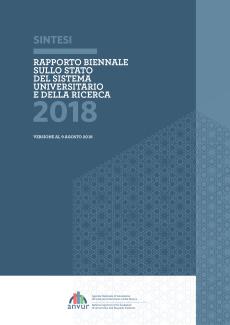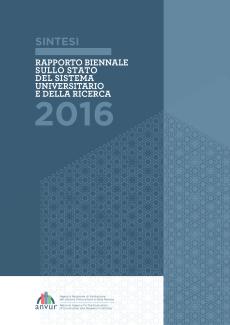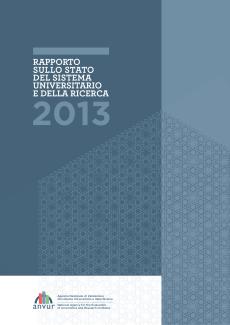The ANVUR Biennial Report is an essential tool for understanding the evolution of the academic and research system in Italy. On this page, you can access previous editions of the Biennial Report, starting from 2013.
ANVUR 2018 Biennial Report

The 2018 ANVUR Biennial Report, the third published by the Agency.
The first part of the Report examines Italian tertiary education, analysing the university system with a focus on students and graduates, as well as post-graduate education, including master's programmes and specialisations. It also delves into the management of economic and human resources within universities, the features of the AFAM system, and the broader tertiary education offer, providing a comprehensive overview of higher education in Italy.
The second part reviews the research system, presenting Italy’s international positioning and showing its steady improvement. It analyses national scientific output in the international context, access to European funding, and participation in European Research Council (ERC) projects. Particular attention is given to third mission activities and technology transfer, highlighting the growing engagement of universities with the wider society.
The Report introduces several important updates compared to previous editions, offering a more extensive analysis of the AFAM system, and an in-depth look at first- and second-level master's programmes and specialisation courses. It also includes a section of thematic insights, examining specific issues such as the costs of the Evaluation of Research Quality (VQR), the relationship between quality and research valorisation, and finally, female representation in academia.
ANVUR 2016 Biennial Report

The 2016 ANVUR Biennial Report is the second report published by the Agency.
The first section of the Report analyses the Italian university system, examining the educational offer, the AFAM system, international mobility, and enrolment trends. It provides an in-depth look at study programmes, graduation rates, and graduate employment, with a focus on the quality of education and the assessment of competences through the TECO test.
The second section examines the Italian university system, with particular attention to the quality of teaching and its ability to deliver high-level education despite the high student-to-teacher ratio. It analyses resource management, highlighting critical issues such as insufficient funding for the right to education and territorial disparities.
The third section is dedicated to the research system, underlining the strong international standing of Italian scientific output, despite a gradual reduction in funding for basic and humanities research. Special attention is paid to the challenges of academic careers and the “brain drain” phenomenon.
The fourth section focuses on evaluation processes and reward mechanisms introduced by the 2010 Gelmini Reform, analysing the impact of the new Research Quality Evaluation (VQR) procedures, quality assurance systems, and changes in the recruitment of academic staff.
ANVUR 2013 Biennial Report

The 2013 ANVUR Biennial Report is the first report published by the Agency.
The first part of the Report focuses on university teaching, providing an in-depth analysis of key indicators related to the quality of higher education. The analysis includes the evaluation of study programmes, enrolment trends, students’ academic performance, and their integration into the labour market, offering a comprehensive overview of the effectiveness of the national education system.
The second part is dedicated to the analysis of the university research system, with particular attention to the scientific output of Italian universities, their capacity to attract funding, and the quality of the research conducted. It also examines the international positioning of Italian universities and their scientific networking capabilities, highlighting strengths and areas for improvement.
The third part of the Report focuses on the innovations introduced by Law 240/2010, analysing its impact on the Italian university system. Special attention is given to the changes in university governance, the new recruitment system for academic staff, and the transformations in departmental organisation, providing a critical assessment of the reforms implemented.
